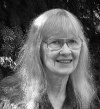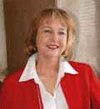Dr. Lynn Margulis
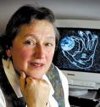 Distinguished University Professor in the Department of Geosciences, University of Massachusetts-Amherst. One of two original proponents of Gaia Theory, along with Dr. James Lovelock. Her theories on microbiological evolution are internationally accepted as the new standard in this field. Dr. Margulis is the author of Symbiotic Planet and many other books and has co-written a number of books with her son, Dorion Sagan.
Distinguished University Professor in the Department of Geosciences, University of Massachusetts-Amherst. One of two original proponents of Gaia Theory, along with Dr. James Lovelock. Her theories on microbiological evolution are internationally accepted as the new standard in this field. Dr. Margulis is the author of Symbiotic Planet and many other books and has co-written a number of books with her son, Dorion Sagan.
Dr. Robert W. Corell
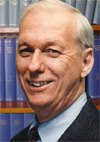 Senior Fellow at the Atmospheric Policy Program of the American Meteorological Society and Senior Research Fellow in the Belfer Center for Science and International Affairs (Kennedy School of Government at Harvard University). Dr. Corell is actively engaged in research on global change and the interface between science and public policy. He currently serves as the Chair of the steering committee for the Arctic Climate Impact Assessment, an international assessment of the impacts of climate variability, change, and ultraviolet radiation increases in the Arctic region. Dr. Corell is an oceanographer and engineer, having received his Ph.D., M.S. and B.S. degrees at the Case Institute of Technology and MIT and having held appointments at the Woods Hole Institution of Oceanography and the Scripps Institution of Oceanography.
Senior Fellow at the Atmospheric Policy Program of the American Meteorological Society and Senior Research Fellow in the Belfer Center for Science and International Affairs (Kennedy School of Government at Harvard University). Dr. Corell is actively engaged in research on global change and the interface between science and public policy. He currently serves as the Chair of the steering committee for the Arctic Climate Impact Assessment, an international assessment of the impacts of climate variability, change, and ultraviolet radiation increases in the Arctic region. Dr. Corell is an oceanographer and engineer, having received his Ph.D., M.S. and B.S. degrees at the Case Institute of Technology and MIT and having held appointments at the Woods Hole Institution of Oceanography and the Scripps Institution of Oceanography.
Dr. Lee Kump
 Professor of Geosciences, Penn State University. Received the Shell U.K. Gaia Fellowship 1990. He is Associate Director of the Earth System Evolution Program of the Canadian Institute for Advanced Research and a member of the American Geophysical Union and the Geochemical Society. Dr. Kump’s research interests include the evolution of ocean and atmosphere composition on geologic time scales, human impact on coastal environments including coral reefs, and other Earth systems topics.
Professor of Geosciences, Penn State University. Received the Shell U.K. Gaia Fellowship 1990. He is Associate Director of the Earth System Evolution Program of the Canadian Institute for Advanced Research and a member of the American Geophysical Union and the Geochemical Society. Dr. Kump’s research interests include the evolution of ocean and atmosphere composition on geologic time scales, human impact on coastal environments including coral reefs, and other Earth systems topics.
Dr. Robert Artigiani
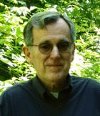 Professor, History of Science at the U.S. Naval Academy. Dedicated to strengthening the bond between natural science and the humanities, he is particularly interested in exploring the possibilities that ethics may be grounded in a scientific understanding of nature that emphasizes processes rather than things, biology rather than physics, chance rather than determinism, and symmetry breaks rather than continuities. For him, the Gaia Hypothesis offers both a compelling image around which to build community and a practical guide for organizing societies able to learn and adapt.
Professor, History of Science at the U.S. Naval Academy. Dedicated to strengthening the bond between natural science and the humanities, he is particularly interested in exploring the possibilities that ethics may be grounded in a scientific understanding of nature that emphasizes processes rather than things, biology rather than physics, chance rather than determinism, and symmetry breaks rather than continuities. For him, the Gaia Hypothesis offers both a compelling image around which to build community and a practical guide for organizing societies able to learn and adapt.
Dr. Eileen Crist
 Associate Professor of Science and Technology in Society at Virginia Tech. She received her Ph.D. in sociology from Boston University, and teaches in the areas of life sciences, technology, and society, as well as environmental science and ethics. Her research is on behavioral science and environmental issues, especially on biodiversity conservation. Dr. Crist is author of Images of Animals: Anthropomorphism and Animal Mind(Temple University Press, 2000) and co-editor of Scientists Debate Gaia: The Next Century (MIT Press, 2004).
Associate Professor of Science and Technology in Society at Virginia Tech. She received her Ph.D. in sociology from Boston University, and teaches in the areas of life sciences, technology, and society, as well as environmental science and ethics. Her research is on behavioral science and environmental issues, especially on biodiversity conservation. Dr. Crist is author of Images of Animals: Anthropomorphism and Animal Mind(Temple University Press, 2000) and co-editor of Scientists Debate Gaia: The Next Century (MIT Press, 2004).
Dr. Lloyd Pinkham
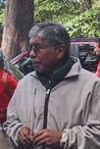 Middle School Teacher, Union Gap, Washington. Former Gifted and Talented teacher in science, reading, math, language and art, Anthropology Professor in Alaska. Dr. Pinkham is an educator of Native Science and Philosophy, ancient traditions and customs, and believes these teach the values of indigenous, inherent knowledge, methods and practices. The central message is: respect and care for the Earth Mother, and, in return, we will also be protected. Dr. Pinkham promotes Native Science, a practice that covers social, economic, natural and wildlife resources and the Universe. He believes that ancient stories and legends handed down through the generations engender values that form the base for a balance of all life.
Middle School Teacher, Union Gap, Washington. Former Gifted and Talented teacher in science, reading, math, language and art, Anthropology Professor in Alaska. Dr. Pinkham is an educator of Native Science and Philosophy, ancient traditions and customs, and believes these teach the values of indigenous, inherent knowledge, methods and practices. The central message is: respect and care for the Earth Mother, and, in return, we will also be protected. Dr. Pinkham promotes Native Science, a practice that covers social, economic, natural and wildlife resources and the Universe. He believes that ancient stories and legends handed down through the generations engender values that form the base for a balance of all life.
Dr. Menas Kafatos
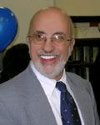 Co-Dean of College of Science; Director, Center for Earth Observing and Space Research, George Mason University. His areas of interest include Earth observing, modeling and observations of natural hazards, global change, pollution in large cities, vegetation coupling to climate and effects of pollution on biosphere.
Co-Dean of College of Science; Director, Center for Earth Observing and Space Research, George Mason University. His areas of interest include Earth observing, modeling and observations of natural hazards, global change, pollution in large cities, vegetation coupling to climate and effects of pollution on biosphere.
Dr. Tyler Volk
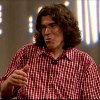 Associate Professor of Biology, Co-director of the Program in Earth and Environmental Science, New York University. Dr. Volk is a systems thinker, a carbon cycle researcher, and author of the books Metapatterns Across Space, Time, and Mind; Gaia’s Body: Toward a Physiology of Earth; and What is Death? A Scientist Looks at the Cycle of Life.
Associate Professor of Biology, Co-director of the Program in Earth and Environmental Science, New York University. Dr. Volk is a systems thinker, a carbon cycle researcher, and author of the books Metapatterns Across Space, Time, and Mind; Gaia’s Body: Toward a Physiology of Earth; and What is Death? A Scientist Looks at the Cycle of Life.
Dr. Donald Aitken
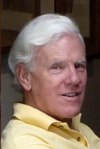 Dr. Donald Aitken is currently Principal of Donald Aitken Associates, and Affiliate Faculty Member at the Frank Lloyd Wright School of Architecture. He was founder and Chairman of the Department of Environmental Studies at San Jose State University, where he was named “Professor of the Year,” and was a staff research physicist and astrophysicist at Stanford University. He is internationally known as an expert on renewable energy, basing his work on a clear understanding of Earth’s living system.
Dr. Donald Aitken is currently Principal of Donald Aitken Associates, and Affiliate Faculty Member at the Frank Lloyd Wright School of Architecture. He was founder and Chairman of the Department of Environmental Studies at San Jose State University, where he was named “Professor of the Year,” and was a staff research physicist and astrophysicist at Stanford University. He is internationally known as an expert on renewable energy, basing his work on a clear understanding of Earth’s living system.
Dr. Dick Richardson
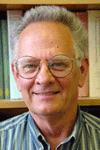 Professor and Director, School of Biological Sciences, Section of Integrative Biology, University of Texas at Austin, Tx. Dr. Richardson holds a Ph.D. in crop and soil science, genetics, and experimental statistics. He sees the Gaia Theory as an integrative framework for all disciplines. He and his wife have worked with a variety of governmental, NGO and private land managers, including the Bureau of Land Management, U.S. Forest Service, Texas Natural Resource Conservation Commission, and Holistic Resource Management of Texas.
Professor and Director, School of Biological Sciences, Section of Integrative Biology, University of Texas at Austin, Tx. Dr. Richardson holds a Ph.D. in crop and soil science, genetics, and experimental statistics. He sees the Gaia Theory as an integrative framework for all disciplines. He and his wife have worked with a variety of governmental, NGO and private land managers, including the Bureau of Land Management, U.S. Forest Service, Texas Natural Resource Conservation Commission, and Holistic Resource Management of Texas.
Dr. James Strick
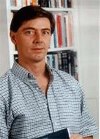 Science Historian, Franklin and Marshall College, Lancaster, Pa., Dept. of Earth and Environment. Dr. Strick’s interests are centered on the history of biology and the environmental sciences. Current research focuses on the history of ideas relating to the origin of life, microbiology, the Gaia paradigm, and NASA’s program in Exobiology, including studies of possible life on Mars.
Science Historian, Franklin and Marshall College, Lancaster, Pa., Dept. of Earth and Environment. Dr. Strick’s interests are centered on the history of biology and the environmental sciences. Current research focuses on the history of ideas relating to the origin of life, microbiology, the Gaia paradigm, and NASA’s program in Exobiology, including studies of possible life on Mars.
Dan Zimble
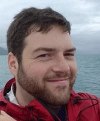 A member of the Environmental SystemsResearch Institute’s Washington D.C. Technology Center in Vienna, Virginia. Mr. Zimble has worked with Geographic Information System and remote sensing technologies for over 10 years applying these technologies in both academic research and practical applications for use by governments, international organizations, and NGOs. Personal and professional interests include the design and delivery of demonstrations that highlight the usefulness of GIS and RS technologies for communicating complex environmental issues at all scales for use in decision-making. Example contributions include participation in the Defying Ocean’s End program.
A member of the Environmental SystemsResearch Institute’s Washington D.C. Technology Center in Vienna, Virginia. Mr. Zimble has worked with Geographic Information System and remote sensing technologies for over 10 years applying these technologies in both academic research and practical applications for use by governments, international organizations, and NGOs. Personal and professional interests include the design and delivery of demonstrations that highlight the usefulness of GIS and RS technologies for communicating complex environmental issues at all scales for use in decision-making. Example contributions include participation in the Defying Ocean’s End program.
Michael Zito
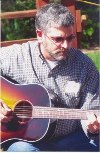 High school biology teacher, Yorktown High School, Arlington, VA. Mr. Zito has worked as a genetic toxicologist and has been teaching science in Arlington County, Virginia for last 18 years, using the Gaia Theory to teach biology and environmental science. (Steering committee member)
High school biology teacher, Yorktown High School, Arlington, VA. Mr. Zito has worked as a genetic toxicologist and has been teaching science in Arlington County, Virginia for last 18 years, using the Gaia Theory to teach biology and environmental science. (Steering committee member)
Dr. H. Bruce Rinker
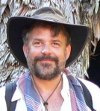 Division Director, Pinellas County (Florida) Environmental Lands Division. Long-time advocate of Gaia Theory as best understanding of ecology currently available; uses Gaian science in forest research. An ecologist, educator, and explorer, Dr. Rinker is also a forest canopy scientist, working in the treetops around the world.
Division Director, Pinellas County (Florida) Environmental Lands Division. Long-time advocate of Gaia Theory as best understanding of ecology currently available; uses Gaian science in forest research. An ecologist, educator, and explorer, Dr. Rinker is also a forest canopy scientist, working in the treetops around the world.
Oran Sandel
 An actor with a wide range of experience in local theater, Mr. Sandel has performed one-act plays on Da Vinci, and is fascinated by the parallels between Da Vinci’s views and the Gaia Theory. He will present a conversation on the Gaia Theory between Da Vinci and Einstein.
An actor with a wide range of experience in local theater, Mr. Sandel has performed one-act plays on Da Vinci, and is fascinated by the parallels between Da Vinci’s views and the Gaia Theory. He will present a conversation on the Gaia Theory between Da Vinci and Einstein.
Marc Spiegel
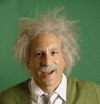 Marc Spiegel has performed both his original stories and his one-man play, Einstein Alive! in schools, libraries, festivals, museums and theaters. In Einstein Alive!, Marc brings Einstein to life taking his audience on an interactive journey through the adventures in his mind using song and audience participation. As a storyteller, Marc was a featured performer in the White House “Millennium on the Mall” celebration. Further information can be found at www.einsteinshow.com, or www.marcspiegel.com.
Marc Spiegel has performed both his original stories and his one-man play, Einstein Alive! in schools, libraries, festivals, museums and theaters. In Einstein Alive!, Marc brings Einstein to life taking his audience on an interactive journey through the adventures in his mind using song and audience participation. As a storyteller, Marc was a featured performer in the White House “Millennium on the Mall” celebration. Further information can be found at www.einsteinshow.com, or www.marcspiegel.com.
Joel Salatin
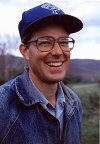 Farmer in Shenandoah Valley who has developed nationally-known sustainable farming methods. Mr. Salatin combines animals, plants, people, and landscapes in what he calls “a symbiotic dance” to achieve environmental, economic, and emotional synergy. Mr. Salatin’s ability to communicate complements his creativity and business sense, enabling him to write and speak all over the United States about the models he has developed and made profitable.
Farmer in Shenandoah Valley who has developed nationally-known sustainable farming methods. Mr. Salatin combines animals, plants, people, and landscapes in what he calls “a symbiotic dance” to achieve environmental, economic, and emotional synergy. Mr. Salatin’s ability to communicate complements his creativity and business sense, enabling him to write and speak all over the United States about the models he has developed and made profitable.
Dr. Thomas I. Ellis
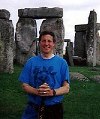 Associate Professor of English at Tidewater Community College, and founder of GAIA International (Global Awareness Interdisciplinary Alliance), a student organization whose mission is to sponsor projects, events, and publications that promote interdisciplinary ecological understanding, and responsibility. Dr. Ellis is a scholar of English Renaissance Literature, and has traveled widely, teaching in Greece, China, and England and presenting papers on Gaia Theory at domestic and international scholarly conferences.
Associate Professor of English at Tidewater Community College, and founder of GAIA International (Global Awareness Interdisciplinary Alliance), a student organization whose mission is to sponsor projects, events, and publications that promote interdisciplinary ecological understanding, and responsibility. Dr. Ellis is a scholar of English Renaissance Literature, and has traveled widely, teaching in Greece, China, and England and presenting papers on Gaia Theory at domestic and international scholarly conferences.
Dr. Scott Turner
 Associate Professor of Biology, SUNY College of Environmental Science & Forestry. Dr. Turner is a physiologist with broad interests in the interface between function, structure and evolution. His work on environmental regulation in nests of African termites offers a fascinating glimpse of “Gaia in microcosm”, a circumscribed system which exhibits “emergent homeostasis.” His book, The Extended Organism: The Physiology of Animal-Built Structures, offers a robust defense of Gaia theory. Through his new book, The Tinkerer’s Accomplice: How Design Emerges from Life Itself, he counters the prevailing idea that systems like Gaia are incompatible with Darwinism.
Associate Professor of Biology, SUNY College of Environmental Science & Forestry. Dr. Turner is a physiologist with broad interests in the interface between function, structure and evolution. His work on environmental regulation in nests of African termites offers a fascinating glimpse of “Gaia in microcosm”, a circumscribed system which exhibits “emergent homeostasis.” His book, The Extended Organism: The Physiology of Animal-Built Structures, offers a robust defense of Gaia theory. Through his new book, The Tinkerer’s Accomplice: How Design Emerges from Life Itself, he counters the prevailing idea that systems like Gaia are incompatible with Darwinism.
Dr. J. Baird Callicott
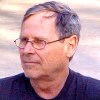 Professor of philosophy and religion studies in the Institute for Applied Sciences at the University of North Texas. Dr. Callicott is the author or editor of many books and articles on environmental ethics and served as both President and Vice-president of the International Society for Environmental Ethics. Dr. Callicott has long studied the life and writings of Aldo Leopold, one of the most influential early figures in ecology, and believes that Leopold anticipated the Gaia Theory in his early writings.
Professor of philosophy and religion studies in the Institute for Applied Sciences at the University of North Texas. Dr. Callicott is the author or editor of many books and articles on environmental ethics and served as both President and Vice-president of the International Society for Environmental Ethics. Dr. Callicott has long studied the life and writings of Aldo Leopold, one of the most influential early figures in ecology, and believes that Leopold anticipated the Gaia Theory in his early writings.
Dr. David Schwartzman
 Professor, Department of Biology, Howard University, Washington, D.C. Dr. Schwartzman is author of Life, Temperature, and the Earth: The Self-Organizing Biosphere, a book focused on the Gaia research program. Main interests include the long-term carbon cycle as a context for biogenesis and biota/biosphere evolution including encephalization. David’s second favorite life forms are lichens.
Professor, Department of Biology, Howard University, Washington, D.C. Dr. Schwartzman is author of Life, Temperature, and the Earth: The Self-Organizing Biosphere, a book focused on the Gaia research program. Main interests include the long-term carbon cycle as a context for biogenesis and biota/biosphere evolution including encephalization. David’s second favorite life forms are lichens.
Dr. Thomas Lovejoy
 President of the Heinz Center for Science, Economics and the Environment. Dr. Lovejoy is a conservation biologist (Ph.D., biology, Yale University) who coined the term “biological diversity.” He has worked for the World Wildlife Fund, Smithsonian Institution, World Bank, United Nations, and other organizations to promote conservation. The author of numerous books and articles, Dr. Lovejoy also founded the public television series Nature.
President of the Heinz Center for Science, Economics and the Environment. Dr. Lovejoy is a conservation biologist (Ph.D., biology, Yale University) who coined the term “biological diversity.” He has worked for the World Wildlife Fund, Smithsonian Institution, World Bank, United Nations, and other organizations to promote conservation. The author of numerous books and articles, Dr. Lovejoy also founded the public television series Nature.

